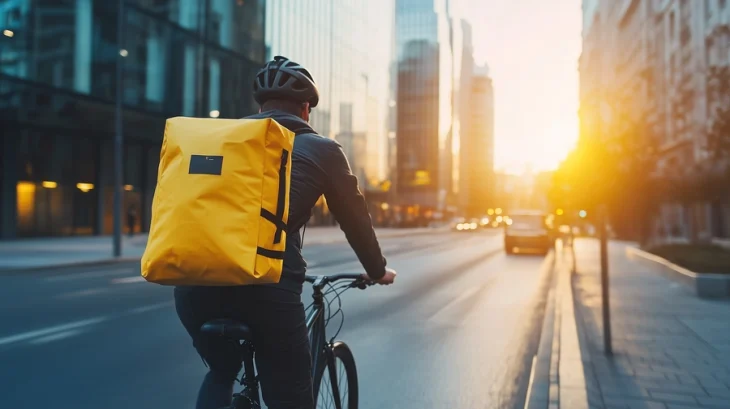
Life on two wheels in the capital is not for the faint-hearted. London’s cycle couriers zip through tight gaps, navigate traffic jams, and deliver parcels at speeds that would impress even the most seasoned drivers. However, with speed comes risk, and staying safe while maintaining pace is a delicate balance. So, how do cycle couriers manage it? It all comes down to training, gear, and a sharp awareness of what’s going on around them.
Most professional cycle couriers go through solid training before taking on the busy streets full-time. This isn’t just about learning to pedal fast or knowing shortcuts. It covers everything from safe riding techniques to emergency stops and route planning. Couriers often study real maps of the city and plan out the most efficient routes, not just the shortest ones. They learn how to predict traffic flow and avoid areas that are known for being tricky or dangerous at certain times of day.
Additionally, many companies encourage or require their riders to complete accredited cycling safety courses. These usually cover advanced road positioning, group riding techniques, and how to stay visible in heavy traffic. It means riders can not only get to their drop-offs on time but also look after themselves and others while they’re at it.
It’s not just about the bike – although having a well-maintained one is essential. Couriers rely on lightweight, reliable bikes that can handle potholes and sudden braking without complaint. Fixed gear or single-speed bikes are popular because they’re easier to maintain and harder to steal, but every rider has their own preference.
What they wear is just as important. High-visibility jackets, gloves with good grip, and weatherproof clothing help couriers stay warm, dry, and seen. A good helmet is non-negotiable, and most riders carry tools, spare tubes, and lights with them as standard. Strong lights are essential during winter and early mornings when visibility drops.
Then there’s the all-important bag. A courier’s bag needs to be big enough to carry multiple items but not so bulky that it throws off their balance. Waterproofing is key, and easy access helps them load and unload quickly without wasting time.
What really sets top couriers apart is their awareness. Riding through London demands constant attention – to pedestrians stepping off the kerb, cars changing lanes without warning, buses pulling out suddenly, and even other cyclists making sharp turns. Couriers train themselves to look far ahead, anticipate what drivers might do, and always leave themselves an escape route.
Many experienced riders don’t use headphones while working, even if they’re tempted by music or podcasts. Being able to hear what’s going on around you – sirens, tyres screeching, horns – can be the difference between a smooth journey and a serious accident.
They also make good use of eye contact, which can help avoid collisions. Locking eyes with a driver at a junction or a pedestrian about to cross tells both parties that they’ve seen each other. It might sound simple, but it’s a powerful tool when you’re weaving through city traffic.
There’s a common image of couriers riding recklessly, but most take pride in their skill and judgement. They know when to hold back and when to push forward. Jumping red lights or mounting pavements might shave off a few seconds, but the risk to safety – and the damage to their reputation – isn’t worth it. Instead, they rely on their local knowledge and timing to stay ahead without cutting corners.
Couriers also tend to look after one another. There’s a quiet sense of community among riders who nod to each other at lights or stop to help when someone’s had a mechanical issue. That shared experience builds a sense of responsibility and support that helps everyone stay safer.
Being a cycle courier in London isn’t just a job – it’s a skill and one that comes with real responsibility. With the right training, gear, and awareness, riders can stay quick and safe even when the roads are packed. They are proof that you can move fast in the city without losing sight of safety or the people around you. Whether you’re watching them from the pavement or waiting for a parcel to arrive, it’s worth appreciating just how much goes into getting it there on time.